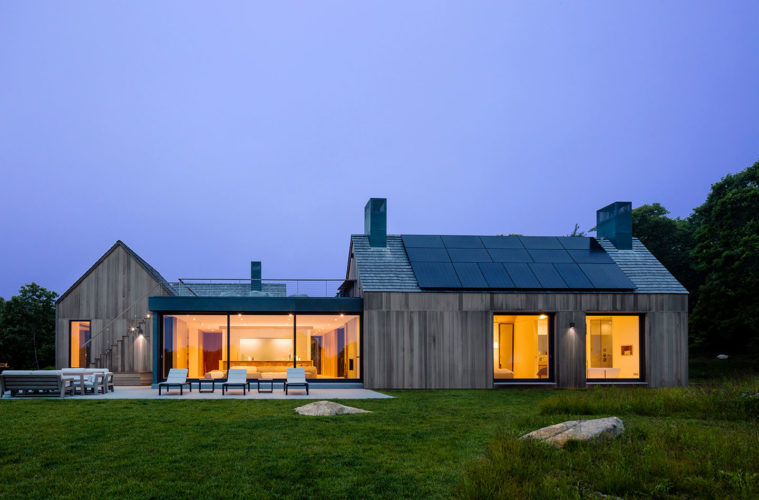Where the built and natural world intersect, a modern Martha’s Vineyard home responds to its environment.
“Understated, beautiful, and comfortable while remaining authentic to the land.” This is how a Martha’s Vineyard homeowner describes the vision she had for a new house on a large, secluded tract in the peaceful up-island town of Chilmark. What began as a vacation retreat became in short order the year-round residence for her, her husband, and their three young children. “When COVID-19 put a stop to work travel for my husband and me,” she says, “we asked ourselves, ‘Why don’t we live here?’”
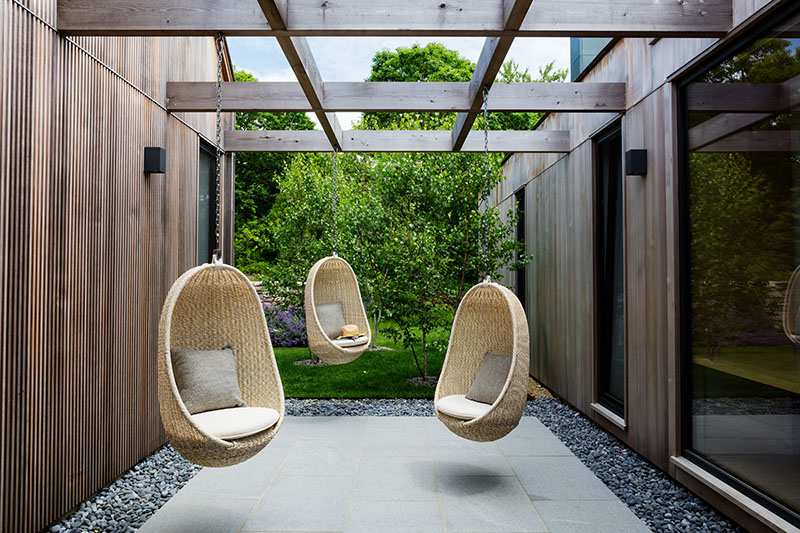

Nestled at the end of a dirt road, the modern home settles comfortably into topography typical of the island—a combination of seascape, woods, cliffs, fields, and moor. Remarkably, about 40 percent of the island is permanently protected open space. In this environment, it’s easy to understand that fishing and farming were once central to the Vineyard’s economy and lifestyle.
None of this was lost on architect Jake Lilley, principal at Jacob Lilley Architects, in Wellesley, Massachusetts. He designed the house to be compatible with the landscape, and with Chilmark’s existing architecture. The house resembles a pinwheel, with a flat-roofed central space surrounded by four cedar-gable cottages that were inspired by both the fishermen’s shacks and the barns that once dotted the island. “Martha’s Vineyard has a great organic quality to it,” says the architect, who took pains to respect the island’s—and his client’s—inherent ease of living and connection to the land.
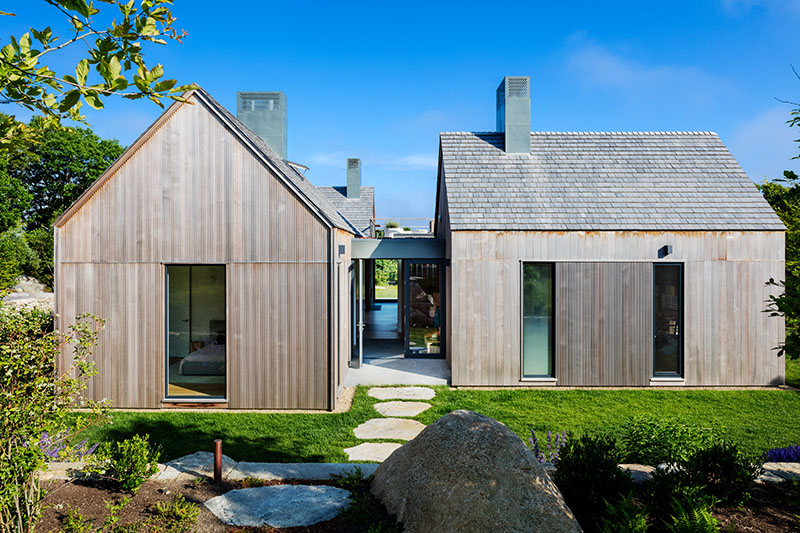

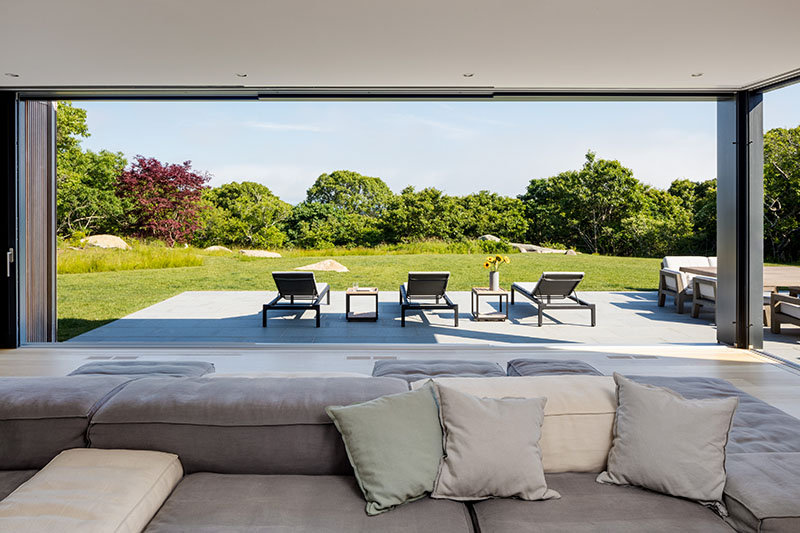

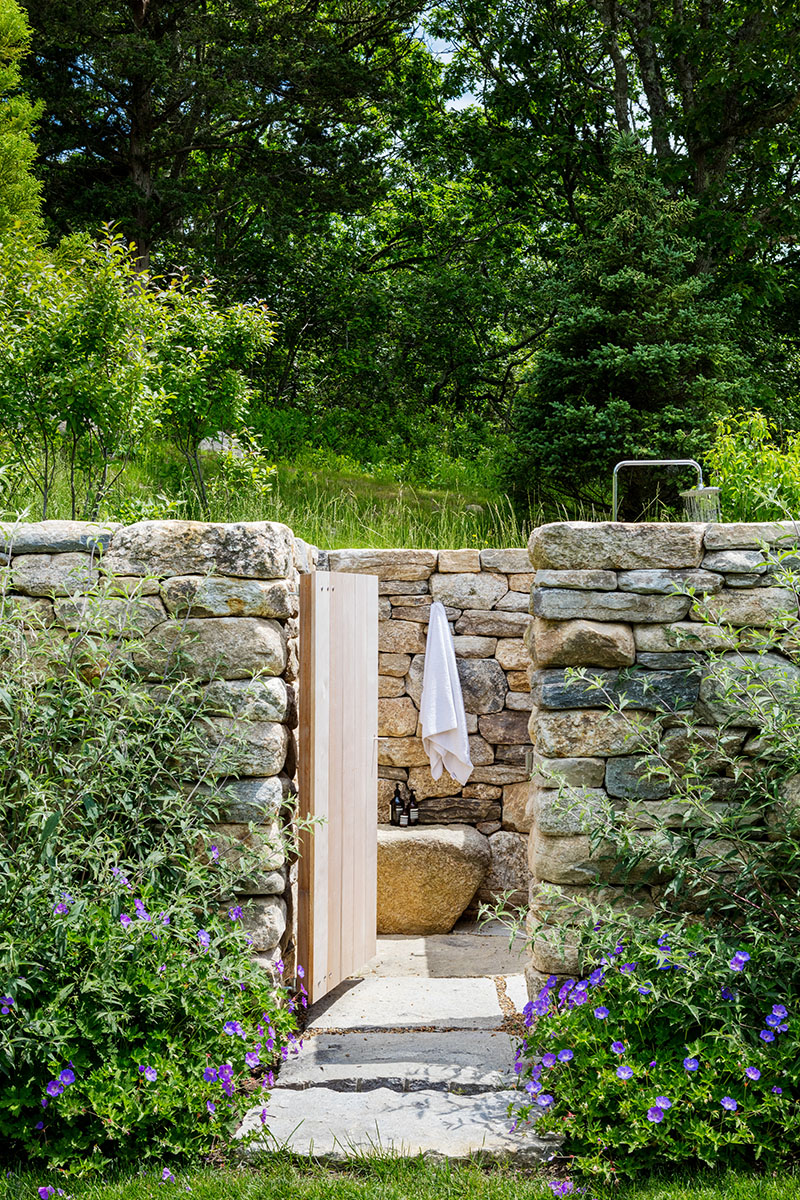

“We wanted the house to be really simple, so you can focus on the outside,” says the homeowner, whose parents have been coming to the Vineyard since 1979. To this end, the largely wood-and-stone material palette is unobtrusively handsome, with solid materials found in nature offset by custom-sized expanses of glass. Carefully engineered sliding doors open entire living spaces to the outdoors, inviting sea breezes in to maximize cross ventilation.
The house’s exterior cedar finish carries inside, where it’s complemented by materials like blue mist granite for a fireplace and a patio, patinized steel for a little laptop shelf, and to warm up the house, white oak on all the ceilings and floors.
The architect collaborated with landscape architect Kris Horiuchi of Horiuchi Solien to maximize and play off the site’s attributes. “The way the house is set in the landscape contributes to its Vineyard feel,” says Lilley, explaining that in order not to interfere with a neighboring house’s viewing rights, they had to lower the house several feet in grade. This reductive grading process also allowed them to add a roof deck on the flat-roofed portion of the house that conforms to the island’s height restrictions. Reached via exterior stairs, this bonus space with comfy seating offers sweeping views of the ocean.
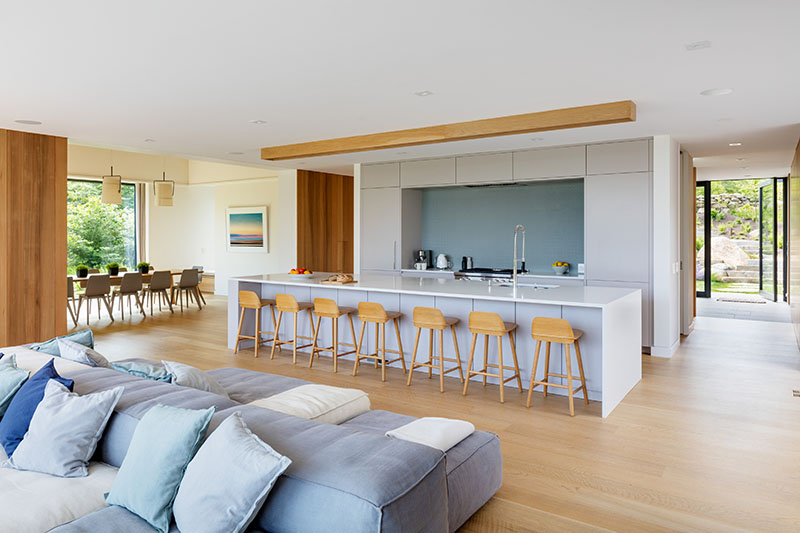

Sight lines inside and out were of special importance. “We wanted the house to reveal itself in a surprising way,” shares the homeowner. “The way the land has been contoured to work with the house achieves this.”
From the pebbled auto port framed by stone walls, a series of terraces flanks stone steps that descend to a path leading to the entry door and mudroom. From here you can see straight through the house to the water. “When we have views, we always want them to extend outside,” says Lilley, who positioned a floor-to-ceiling pane of glass at the end of the entry hall for just that purpose.
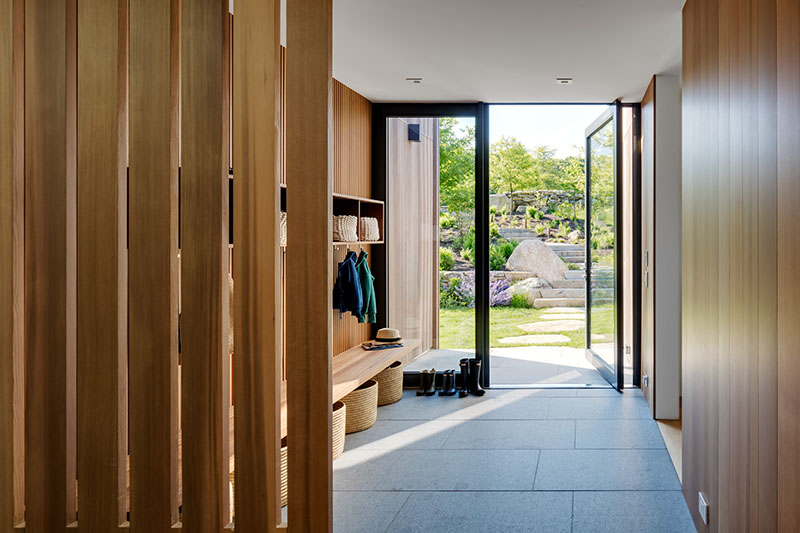

The four cottage volumes, which house the dining room, guest and children’s bedrooms, and the master suite, are linked by glass connectors to the kitchen and great room, the heart of the home, where cooking is a favorite family activity and a pillowy modular sofa encourages lounging. This spacious central area epitomizes indoor-outdoor living, with large exterior sliding doors that pocket into the side walls, exposing the house to views of the ocean and the outdoors, where there is a pool, a patio for cooking and dining, and raised planting beds that yield a bounty of vegetables.
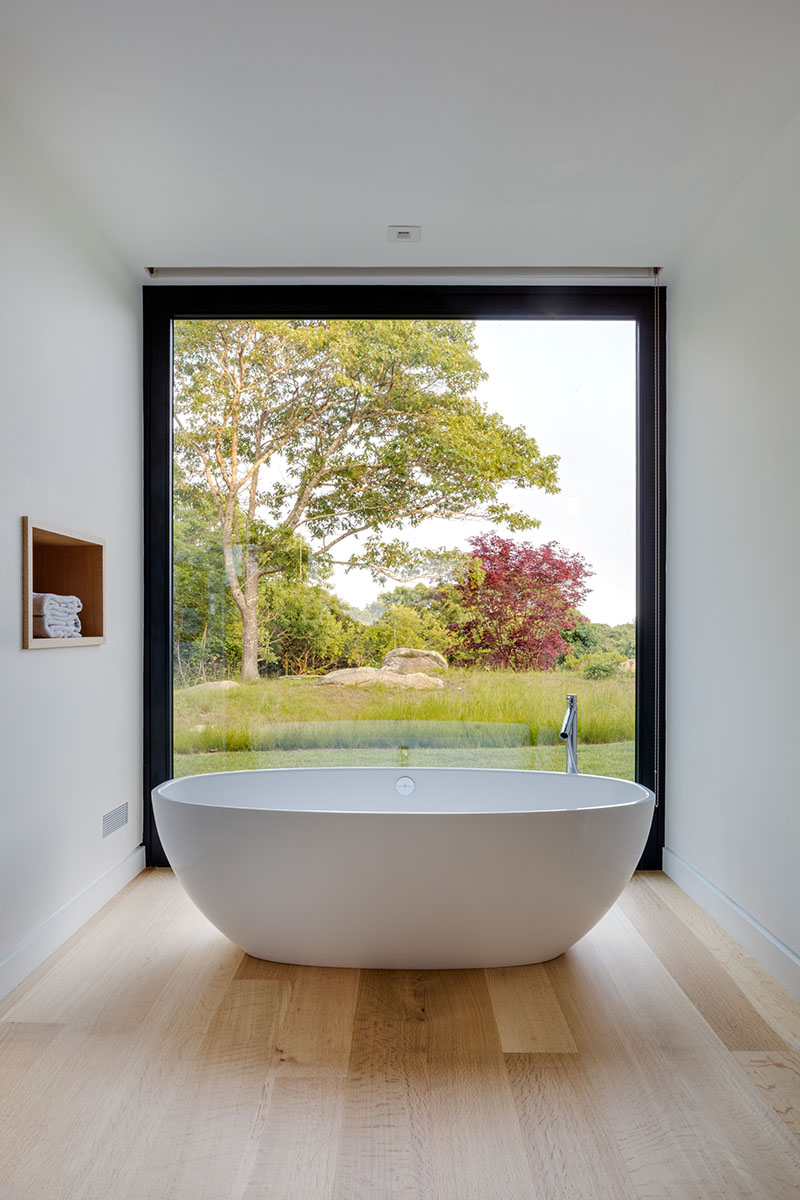

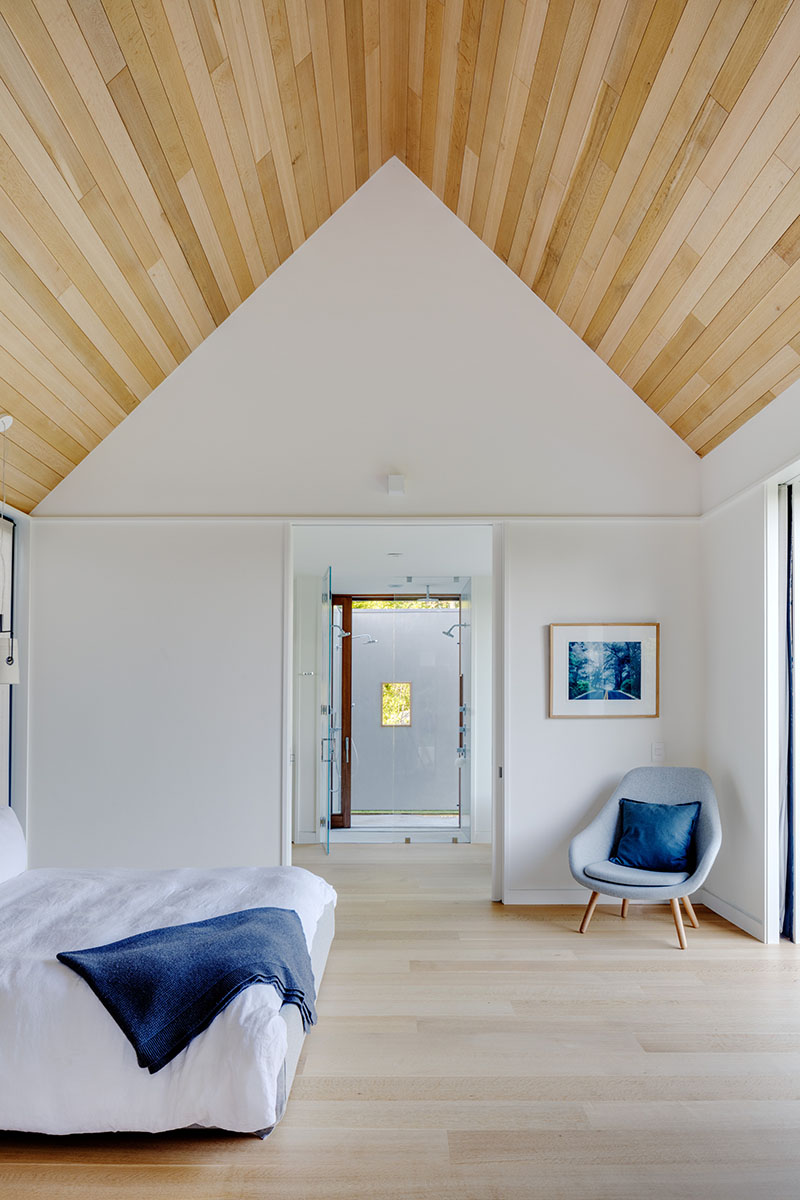

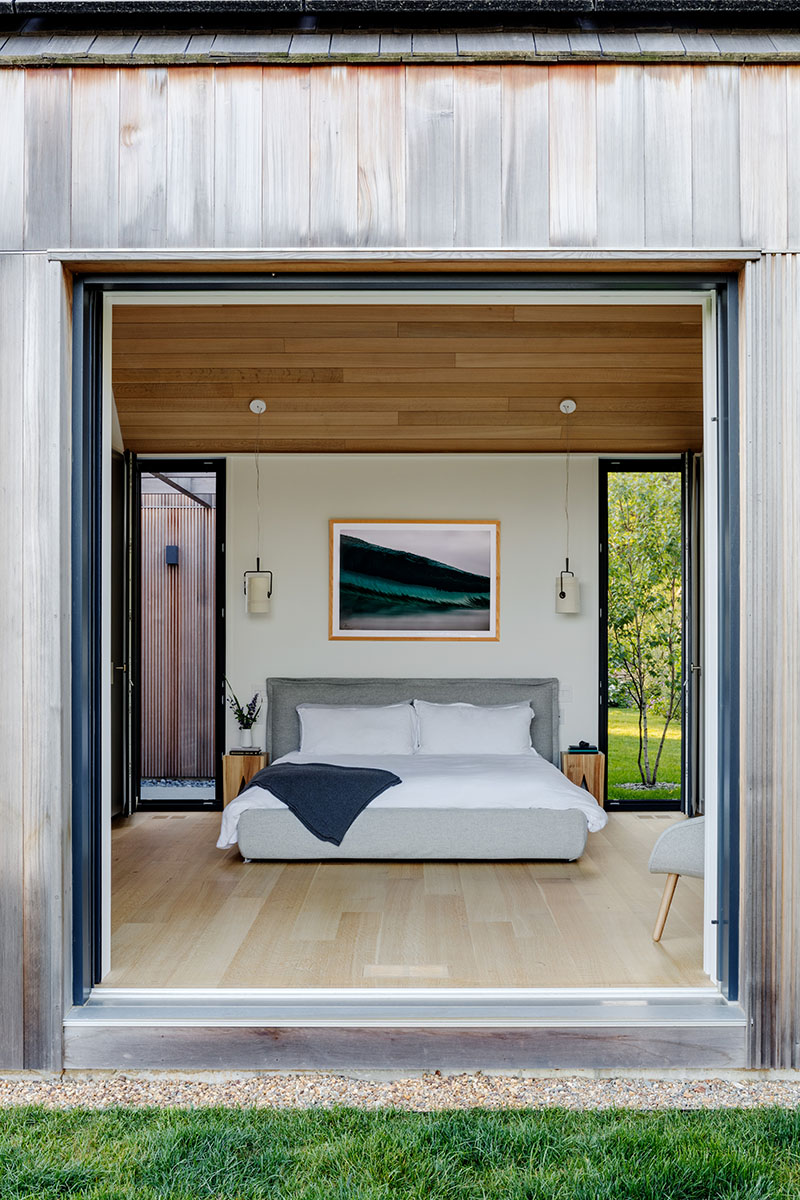

“What we like to do on modern houses, and what we did here, is blur the distinction between what is a door and what is a window,” says Lilley. “Instead of windows punched into a wall, we have big doors that slide open.” Even the master shower door slides into the wall, so you can shower inside or out. Further, the architect points out, all the house’s different gables create spaces or views, some of which are outside, like a meditation/reading nook where three chairs hang in the open air from a pergola-like structure above.
While the views of the water from the house, especially from the deck, are breathtaking, Lilley’s innovative design for the house provides many other “moments” that are just as special. As he says, “You don’t need the water to have interesting experiences in this house.”
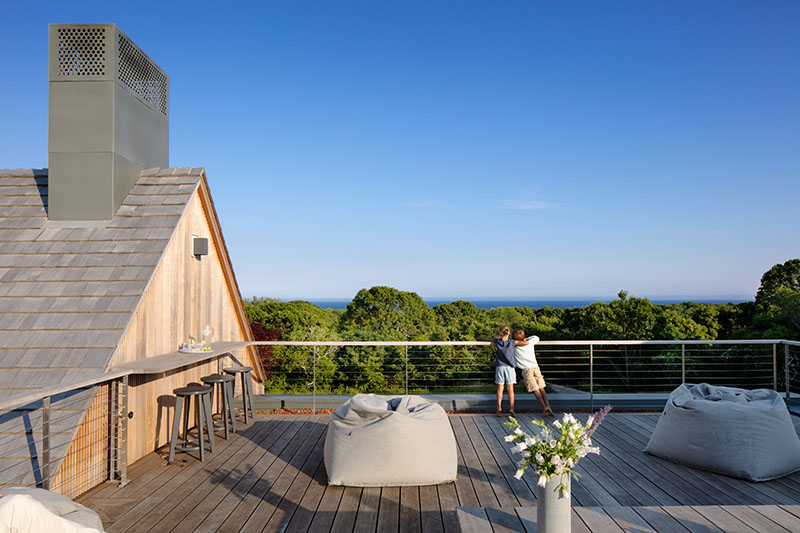

For more information, visit jlaarchitects.com


